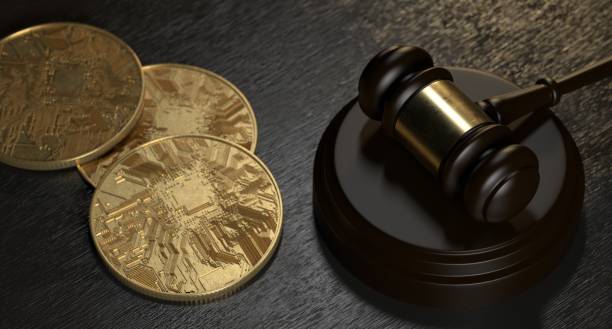Introduction
Blockchain technology has emerged as a revolutionary force across multiple industries, from finance to healthcare. One of its most promising applications is in the realm of intellectual property (IP). In a world where IP protection and management are critical to innovation, the legal challenges of safeguarding intellectual property have become increasingly complex. Blockchain’s decentralized, transparent, and secure features provide a unique solution to these challenges. However, with great innovation comes great responsibility, and understanding the legal implications of integrating blockchain into IP protection is crucial.

Understanding Blockchain Technology
At its core, blockchain is a distributed ledger technology (DLT) that allows data to be stored across multiple computers or nodes in a way that makes it immutable and transparent. This decentralized nature ensures that no single entity controls the data, providing a higher level of security compared to traditional centralized systems. Blockchain enables peer-to-peer transactions without the need for intermediaries, and it operates through smart contracts, which are self-executing agreements that automatically enforce the terms of a contract once predefined conditions are met.
The Role of Intellectual Property
Intellectual property encompasses the legal rights granted to individuals or organizations for their creations, innovations, and inventions. These rights include patents, trademarks, copyrights, and trade secrets. IP plays a vital role in fostering creativity and innovation by ensuring that creators are rewarded for their work and are protected from unauthorized use or reproduction.
However, the traditional system of managing IP has several challenges. The process of registering, monitoring, and enforcing IP rights can be cumbersome and costly. Additionally, the risk of infringement, fraud, and mismanagement is high in the digital age, where assets are often copied, stolen, or misused online.
How Blockchain Enhances IP Protection
Blockchain’s characteristics align well with the needs of intellectual property protection. For example, its immutability ensures that once an asset or a document is recorded, it cannot be altered, ensuring that IP owners have clear proof of ownership. This feature alone could reduce the risks of IP infringement, as anyone attempting to use or steal the IP would be immediately flagged by the immutable blockchain record.
Additionally, blockchain can streamline the process of licensing intellectual property. Traditionally, licensing agreements are managed manually, which can be time-consuming and prone to error. With blockchain, smart contracts can automate the licensing process, ensuring that IP owners receive payments when their work is used and that all terms of the agreement are adhered to without the need for intermediaries.
The Intersection of Blockchain and Intellectual Property: Key Legal Considerations
- Patent Protection and Blockchain
Patents are a critical aspect of intellectual property, granting inventors exclusive rights to their inventions. However, the patent process is often lengthy and costly. Blockchain technology can streamline patent registration and management by providing a secure, transparent platform for filing and tracking patents. By recording patent information on the blockchain, inventors can establish a clear and unalterable proof of their invention, which could be crucial in patent disputes.
Furthermore, blockchain could play a role in patent enforcement. By using smart contracts, inventors can automatically enforce patent rights when certain conditions are met, such as when their patented technology is used by others. This could reduce the need for costly litigation and ensure that patent holders are properly compensated for their innovations.
- Copyright Protection and Blockchain
Copyright laws protect the creators of original works, such as music, art, literature, and software, from unauthorized use or reproduction. The traditional process of registering copyrights and monitoring infringement is often inefficient and cumbersome. Blockchain technology offers a more efficient solution by enabling the creation of immutable digital records that prove the ownership of copyrighted works.
With blockchain, creators can upload their works to the blockchain, which acts as a digital ledger, time-stamping the creation and providing a permanent record of ownership. This can make it easier to prove authorship in cases of infringement and reduce the need for expensive legal battles.
- Trademark Rights and Blockchain
Trademarks protect brands and symbols used to identify goods or services in the marketplace. Blockchain can be used to register trademarks and track their use in a secure and transparent manner. This would help prevent counterfeit goods from flooding the market and enable businesses to monitor the use of their trademarks globally in real-time.
Moreover, blockchain can provide a way to enforce trademark rights more effectively. Smart contracts can be used to automate trademark licensing agreements, ensuring that trademark owners are compensated whenever their brand is used, and preventing unauthorized use.
- Trade Secrets and Blockchain
Trade secrets, such as proprietary formulas, business strategies, and processes, are often the most valuable assets for many companies. However, protecting trade secrets in the digital age is difficult, as they are often vulnerable to theft or unauthorized disclosure. Blockchain can provide an added layer of security by enabling businesses to record trade secrets on a blockchain ledger, making it much harder for unauthorized parties to access or steal this valuable information.
By using blockchain for trade secret protection, businesses can ensure that access to sensitive information is tightly controlled and that any breaches can be easily traced and monitored.
Legal Risks and Challenges
While the potential benefits of blockchain in the context of intellectual property are significant, there are also several legal risks and challenges that must be considered. One major issue is the question of jurisdiction. As blockchain operates across multiple countries and borders, determining which laws apply to blockchain transactions and IP rights can be complex. This could create legal uncertainty for IP owners and blockchain developers alike.
Another challenge is the need for regulatory clarity. As of now, the legal framework surrounding blockchain and IP protection is still evolving. Many countries have not yet fully addressed how blockchain can be integrated into existing IP laws, leaving many questions unanswered about issues such as ownership, enforcement, and licensing.
Finally, while blockchain can reduce the risk of fraud and infringement, it is not immune to attacks. Hackers and malicious actors could potentially exploit vulnerabilities in blockchain systems, compromising the security of IP records and transactions.
Conclusion
Blockchain technology holds immense potential for transforming the landscape of intellectual property protection and management. By leveraging its decentralized, secure, and transparent features, blockchain can provide IP owners with greater control over their assets, reduce the risk of infringement, and streamline licensing processes. However, as with any emerging technology, there are legal considerations that must be carefully navigated. IP owners and blockchain developers must work together to ensure that the legal framework surrounding blockchain and IP protection evolves to meet the needs of the digital age.

nc0zid
0j2v4r
simjgp
4wzqiy
eb5em9
Navigating AI tools can be overwhelming, but AIGO Tools simplifies it with curated solutions. Their AI Twitter Assistant is a great example of streamlining social media management. A much-needed resource for professionals and startups alike.
qtz91d
I don’t think the title of your article matches the content lol. Just kidding, mainly because I had some doubts after reading the article.
Thank you for your sharing. I am worried that I lack creative ideas. It is your article that makes me full of hope. Thank you. But, I have a question, can you help me?
Thanks for sharing. I read many of your blog posts, cool, your blog is very good.
Thanks for sharing. I read many of your blog posts, cool, your blog is very good.
levitra pharmacy levitra with alcohol levitra kaufen schweiz
vt38ot
Your article helped me a lot, is there any more related content? Thanks! https://accounts.binance.com/hu/register-person?ref=FIHEGIZ8
r8wvvf
Chơi 88 com mà đang quay thì bị hết pin, trúng mà không kịp chụp 😭
Thank you for your sharing. I am worried that I lack creative ideas. It is your article that makes me full of hope. Thank you. But, I have a question, can you help me?
Your point of view caught my eye and was very interesting. Thanks. I have a question for you.
44vgbv
4mwm7k
That pre-flop aggression is key, but reading opponents post-flop is where real money’s made! Thinking about mobile access too – a smooth jili pg online casino experience on the go is a huge plus these days, especially with apps like theirs! 👍
dcwsp7
Your point of view caught my eye and was very interesting. Thanks. I have a question for you.
719azy
That’s a great point about accessibility in shooting games – crucial for new players! Platforms like 365 jili seem to understand that, focusing on a smooth experience. A solid onboarding process really makes a difference, doesn’t it? It’s all about lowering that initial skill barrier.
yd6gs0
Good shout.
thc microdose gummies area 52
hybrid vape area 52
magic mushrooms area 52
distillate carts area 52
best thca flower area 52